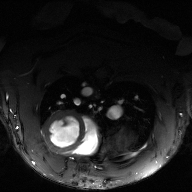Juan Felipe Pérez-Juste Abascal, Ph.D.
Researcher in medical imaging, image processing, inverse problems and deep learning
Current position as Data Scientist Innovation at Groupe SEB, Lyon, France

juanabascal78 at gmail.com
Compressed sensing and sparsity
Split Bregman Total Variation
GitHub repository:
Total Variaton efficiently implemented using the Split Bregman formulation on Python.
To come up soon

Compressed sensing diffusion lung MRI (SIDER)
GitHub repository: https://github.com/HGGM-LIM/compressed-sensing-diffusion-lung-MRI
The proposed method incorporates the knowledge of the signal decay into the reconstruction (SIDER) to accelerate the acquisition of MR diffusion data by undersampling in both spatial and b-value dimensions.
SIDER combines total variation with a penalty function that promotes sparsity across the b-direction.
The proposed method is presented in the paper "Incorporation of prior knowledge of the signal behavior into the reconstruction to accelerate the acquisition of MR diffusion data". JFPJ Abascal, Manuel Desco and J Parra-Roble. IEEE Trans Med Imaging, 2017.
Spectral X-ray image reconstruction toolbox (SPRAY)
Repository: https://www.creatis.insa-lyon.fr/~ducros/WebPage/spray.html
SPRAY 1.0 performs material decomposition of projection images acquired by a photon counting detector. It implements a regularised weighted least square Gauss Newton algorithm (see here). Different types of functional can be chosen to regularise the material images. It is designed to be simple yet efficient.
This toolbox is presented in the paper N Ducros, JFPJ Abascal, B Sixou, S Rit, F Peyrin. "Regularization of Nonlinear Decomposition of Spectral X-ray Projection Images". Med Phys, 44(9):e174-e187, 2017.
Motion estimation and image reconstruction compressed sensing MRI (SPLICS)
GitHub repository: https://github.com/HGGM-LIM/Motion-Estimation-Compressed-Sensing-MRI
SPLICS generalizes spatiotemporal total variation (ST-TV) by modelling the motion between consecutive frames into the reconstruction framework. SPLICS comprises two steps: i) motion is estimated from a previous reconstruction (image given by TV in this example) to build a sparse temporal operator encoding motion, ii) image reconstruction taking into account the previously estimated motion operator.
This demo compares TV, spatiotemporal TV and SPLICS on cardiac cine MRI data.
The proposed method is presented in the paper JFPJ Abascal et al. "Comparison of total variation with a motion estimation based compressed sensing approach for self-gated cardiac cine MRI in small animal studies", PLOS ONE 9(10): e110594, 2014. DOI: http://dx.doi.org/10.1371/journal.pone.0110594
Prior- and motion-based compressed sensing (PRIMOR)
GitHub repository: https://github.com/HGGM-LIM/prior-motion-reconstruction-CT
PRIMOR method extends previous prior-based reconstruction (PBR) methods by including a model of the motion between consecutive images. Motion is estimated using a nonrigid registration method based on hierarchical B-splines and the constrained optimization problem is efficiently solved using the split Bregman formulation.
The proposed method is presented in the paper "A novel prior- and motion-based compressed sensing methods for small-animal respiratory gated CT. JFPJ Abascal, M Abella, E Marinetto, J Pascau, and M Desco. PLOS ONE 9;11(3):e0149841, 2016." DOI: http://dx.doi.org/10.1371/journal.pone.0149841
PRIMOR is compared to PBR and assessed using small-animal respiratory gated-CT data.





Prior Image Constrained Compressed Sensing (PICCS)
Repository: https://github.com/HGGM-LIM/Split_Bregman_PICCS_fMRI
This repository contains a demo that shows how to use PICCS for preclinical fMRI. The demo uses fMRI small-animal data to simulate an undersampling pattern based on a variable density pdf.
This version of PICCS is efficiently implemented with the Split Bregman formulation by solving a linear system in the Fourier domain at each iteration. Thus, it can be used for dynamic MRI applications and can be also easily adapted for dynamic denoising problems.
The method was proposed and validated in Chavarrias, C., Abascal, J.F., Montesinos, P. and Desco, M.,"Exploitation of temporal redundancy in compressed sensing reconstruction of fMRI studies with a prior-based algorithm (PICCS)". Med Phys, 42(7): p. 3814 (2015). DOI: http://dx.doi.org/10.1118/1.4921365


Split Bregman Spatiotemporal Total Variation
GitHub repository: https://github.com/HGGM-LIM/Split-Bregman-ST-Total-Variation-MRI
Spatiotemporal Total Variaton efficiently implemented using the Split Bregman formulation and evaluated in cardiac cine MRI in Small Animal studies.
The Split Bregman method separates L2- and L1-norm functionals in such a way that they can be solved analytically in two alternating steps. In the first step a linear system is efficiently solved in the Fourier domain, which can be done in MRI and image denoising problems where operators have representation in the Fourier domain. The computational cost is three FFT per iteration.
Method presented in P Montesinos, JFPJ Abascal, L Cussó, J J Vaquero, M Desco. Application of the compressed sensing technique to self-gated cardiac cine sequences in small animals. Magn Reson Med., 72(2): 369–380, 2013. DOI: http://dx.doi.org/10.1002/mrm.24936


Constrained Spatial Total Variation
Repository: https://github.com/HGGM-LIM/Split-Bregman-Total-Variation-Jacobian-Matrix
Demos to use 2D and 3D constrained Total Variaton image reconstruction problems using the Split Bregman formulation. It works for general linear (matrix) measurement operator or Jacobian. A linear system is efficiently solved in the image domain using a Krlylov solver.
The demo solves a compressed sensing MRI problem as an exemplar.
Methodology proposed in Abascal JF, Chamorro-Servent J, Aguirre J, Arridge S, Correia T, Ripoll J, Vaquero JJ, Desco M. Fluorescence diffuse optical tomography using the split Bregman method. Med Phys. 38(11):6275-84, 2011. (Selected paper by the American Physical Society and the American Institute of Physics, http://www.vjbio.org). DOI: http://dx.doi.org/10.1118/1.3656063
Efficient ART-Split Bregman Reconstruction (ART-SB)
Repository: https://github.com/HGGM-LIM/Efficient-ART-Split-Bregman-Reconstruction
MATLAB demo to use a novel and efficient iterative reconstruction method that alternates the Algebraic Reconstruction Technique (ART) with a Total Variation (TV) denoising step based on the Split Bregman formulation.
The method is ideal for large scale problems as it proposes to combine an efficient linear solver with and an efficient denoising method. Here we use ART and the Split Bregman formulation, but these methods can be substituted by the method of choice.
This demo reconstructs fluorescence diffuse optical tomography data as presented in the paper Use of Split Bregman denoising for iterative reconstruction in fluorescence diffuse optical tomography. J Chamorro-Servent, J F P J Abascal, J Aguirre, S Arridge, T Correia, J Ripoll, M Desco, J J Vaquero. J Biomed Opt, 18(7):076016, 2013. DOI: http://dx.doi.org/10.1117/1.JBO.18.7.076016